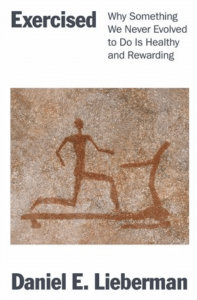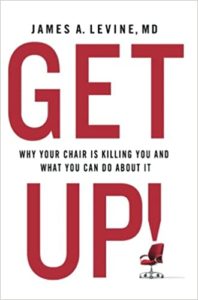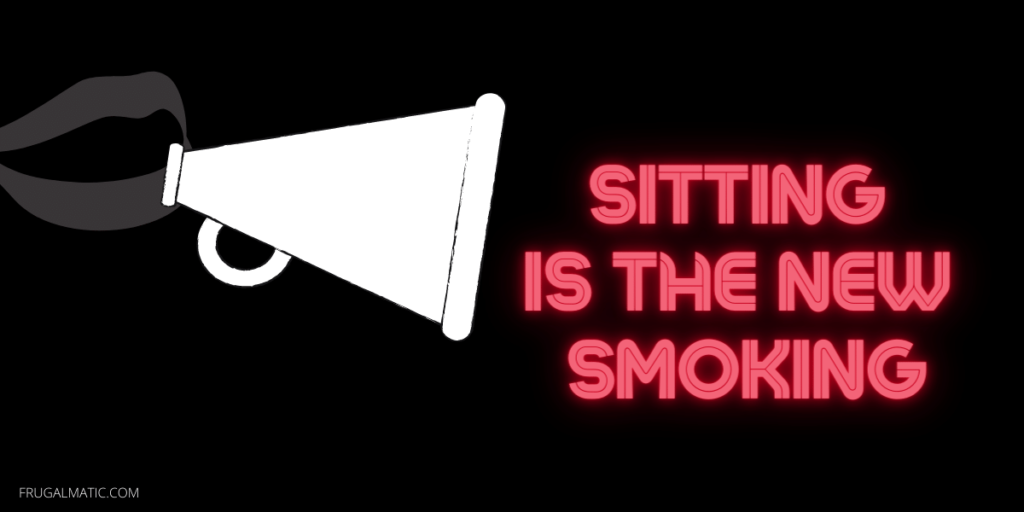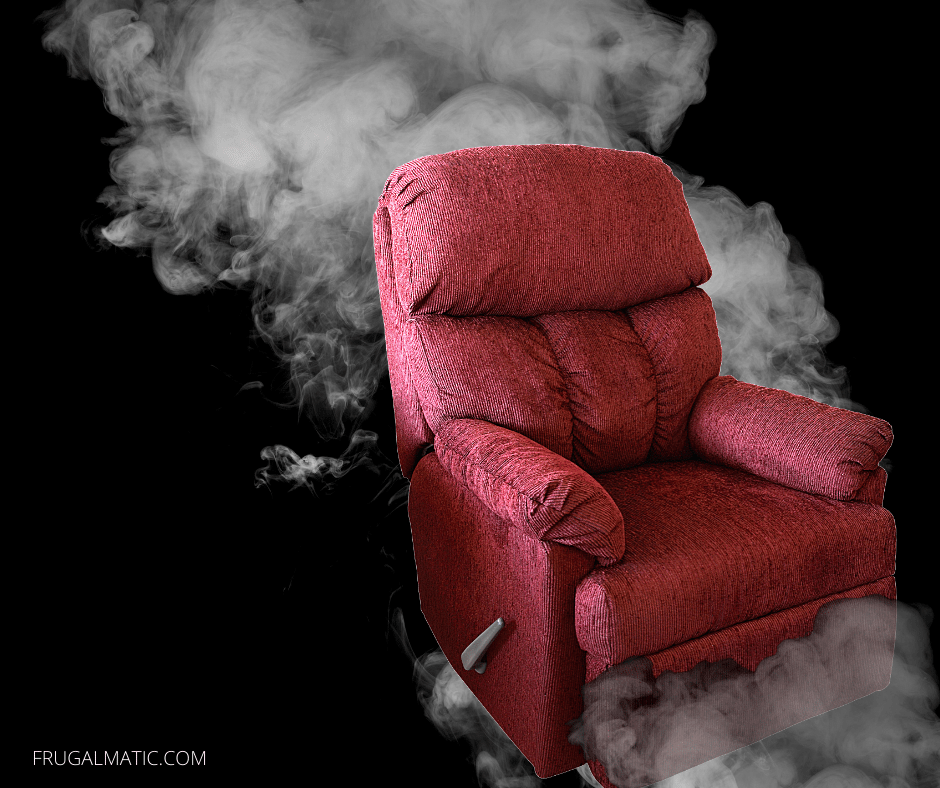This post was last updated on November 5th, 2022 at 01:48 pm
In his new book “Exercised,” Daniel Lieberman gets many things right about the importance of exercise and physical activity. He gets one thing wrong, however, in treating as extreme the idea that “sitting is the new smoking.” Oddly enough, all the evidence you need to counter Lieberman’s claims can be found within “Exercised” itself.
To be clear, my concern doesn’t take away from what the author, a Harvard University professor of human evolutionary biology, has accomplished with “Exercised.” On the whole, it is an illuminating, engaging and sometimes humorous exploration of human evolution and people’s love-hate relationship with exercise. For a book filled with references to behavioral studies and observations about human evolution, it’s a surprisingly fun read.
‘Exercised’ misinterprets ‘sitting is the new smoking’
With that said, some parts of the chapter “Sitting: Is it the new smoking?” didn’t add up. Let’s examine closely the most problematic passage: “Among the many hyperbolic statements written about sitting, maybe the most extreme is that sitting is the new smoking. While cigarettes are novel, addictive, expensive, smelly, toxic, and the world’s number one killer, sitting is as old as the hills and utterly natural.” At this point, you might think Lieberman is prepared to argue sitting comes with no or minimal health risks. Instead, he becomes overly literal by contending “the problem isn’t sitting itself, but hours upon hours of inactive sitting combined with little to no exercise.” He ignores the fact that “sitting is the new smoking” was born out of research finding that “hours upon hours of inactive sitting combined with little or no exercise” is unhealthy. This phrase has never been about the mere act of sitting. It’s always been about excessive sitting.
The ‘prominent physician’ behind ‘sitting is the new smoking’
To understand why Lieberman takes issue with “sitting is the new smoking” while simultaneously agreeing with the research that backs up this statement, we need to examine his treatment of the physician widely credited with coining the “sitting is the new smoking” phrase, James Levine. Levine has been a professor of medicine at Mayo Clinic for 34 years and is the former director of the clinic’s Obesity Solutions Institute. Lieberman never mentions Levine by name in the main text of “Exercised,” where he refers to him as a “prominent physician.” Rather, Levine is identified at the back of the book in the notes section. It’s a bit flippant.
Lieberman writes that a “growing chorus of exercists who nag us to exercise condemn sitting as a modern scourge. One prominent physician has declared that chairs are ‘out to get us, harm us, kill us’ and that ‘sitting is the new smoking.’ According to him, the average American sits for an unacceptable thirteen hours a day, and ‘for every hour we sit, two hours of our lives walk away—lost forever.’” A note accompanying this passage cites one of Levine’s books, “Get Up! Why your chair is killing you and what you can do about it.”
Lieberman dismisses Levine’s work, and yet the two would probably agree on much of what the other has to say about the importance of leading an active lifestyle. Indeed, much of Lieberman’s 464-page book proves Levine right. While Lieberman brushes aside comparisons to smoking, he articulates perfectly the many harmful effects that prolonged sitting has on the human body.
‘Sitting is the new smoking’ taken in context
For whatever reason, Lieberman ignores the context surrounding “sitting is the new smoking.” Levine, like Lieberman, recognizes that excessive sitting is the primary problem. Levine was trying to raise awareness about inactivity’s health risks in the 2000s and 2010s, when the risks weren’t widely appreciated or accepted. When Levine declared chairs were “out to get us,” he didn’t mean that chairs had turned into mini-Terminators. He meant that the large quantity of time people were spending in chairs was problematic.
Sure, Levine used some hyperbole, but it served to make a point. Besides, I don’t think a phrase like “hours upon hours of inactive sitting combined with little to no exercise is bad for you” would have resonated with people. If Levine had coined this phrase instead of “sitting is the new smoking,” his message might have been lost.
Like with any public health slogan, “sitting is the new smoking” makes certain assumptions. For comparison sake, let’s take the old slogan “drinking and driving can kill a friendship.” “Drinking and driving” assumes we’re talking about alcoholic beverages. There’s a common understanding that “drinking and driving” relates to drinking excessively. However, I imagine if Lieberman were to critique “drinking and driving can kill a friendship,” he might say something along these lines: “Among the many hyperbolic statements written about drinking, maybe the most extreme is that drinking and driving can kill a friendship. More truthfully, the problem isn’t drinking itself but the excessive consumption of alcoholic beverages combined with operating a vehicle.” Well, no kidding. “Drinking and driving can kill a friendship” isn’t any more extreme or hyperbolic than “sitting is the new smoking.” Just as “drinking” refers to drinking alcohol excessively, “sitting” refers to sitting excessively. Every slogan requires its audience to make some assumptions.
Yes, your chair is out to get you
Indeed, prolonged sitting can contribute to a smorgasbord of health problems, and, in “Exercised,” Lieberman documents them, ranging from chronic inflammation, to diabetes, to poor circulation. He also points out that exercise in itself doesn’t cancel out the effects of prolonged sitting. He cites a study showing that those who exercise more than seven hours a week still “had a 50 percent higher risk of dying from cardiovascular disease if they otherwise sat a lot.” Those gym workouts aren’t permission to be a couch potato—yet another reason to treat sitting as the new smoking.
Lieberman extensively studied hunter-gatherer communities (the few that remain in the world today) and observes that they spend a lot of time sitting when they’re not hunting and gathering. This is how Lieberman perhaps gets the idea that Levine’s views on sitting are extreme. Yet, it’s obvious these hunter-gatherers, despite sitting a lot, are much more active than Americans. Lieberman notes, “Altogether, twenty-first century Americans elevate their heart rates to moderate levels between half and one-tenth as much as nonindustrial people.” When Levine says “chairs are out to get us,” he’s not speaking to hunter-gatherers but to those in industrialized nations, especially the United States.
What ‘Exercised’ gets right
Despite my criticisms of some parts of “Exercised,” I applaud one of the main points of the book: People are “exercised” about having to exercise. Lieberman seeks to reassure readers that not wanting to exercise is natural in that humans evolved to conserve energy. Early humans would have considered modern forms of exercise absurd. They wouldn’t run unless they had to run and sometimes they did, such as to escape prey. Even early settlers of the U.S. would have considered exercising odd, given their labor-intensive lifestyles. Because we don’t need to move much to go about daily routines today, Lieberman urges us to exercise, despite our DNA calling on us to take it easy.

Light activity comes with many benefits
Lieberman and Levine are both believers in physical activity’s benefits and its potential to help fend off certain cancers, dementia, and other ailments. It also can help boost our immune systems. Even light physical activity, such as washing the dishes or sweeping the floor, burns calories and provides health benefits. “To supply the energy needed for these low-intensity movements, muscles extract and then burn sugar and fat from the blood stream. The activities aren’t serious exercise, but experiments that ask people to interrupt long periods of sitting even briefly—for example, just a hundred seconds every half hour—result in lower levels of sugar, fat, and so-called bad cholesterol in their blood,” Lieberman states. Perhaps physical activity’s greatest benefit is in reducing inflammation, particularly inflammation linked to overgrown fat cells.
Read: Discover the 3 qualities of the physically active mindset
Lieberman’s observations about light physical activity should not be lost on Frugalmatic readers. This website is all about finding ways to work physical activity into your day, particularly those activities that allow you to both accomplish something and garner health benefits. By itself, washing dishes by hand might not make a big difference. But doing multiple light activities throughout each day is beneficial (See my post about the “random walk”). As Lieberman puts it, “These calories add up. By merely engaging in low-intensity, ‘non-exercise’ physical activities for five hours a day, I could spend as much energy as if I ran for an hour. So if I sit instead of move, the calories I consumed at lunch are more likely to be converted to fat rather than burned.”
Tapping the power of NEAT
One of the areas where Levine has distinguished himself is the study of non-exercise activity thermogenesis, or NEAT. Levine devotes much of “Get up!” to explaining how NEAT works and how it can help people regulate body weight. As I discuss in a previous post, a 1999 study on overeating found people who overate but maintained higher levels of physical activity were better able to maintain a healthy weight than those who overate but weren’t as physically active. Levine showed how NEAT plays a major role in weight gain and loss.

“People who have the ability to switch on their NEAT movement do not gain fat with overfeeding; they stay slim. People who stay seated when they overfeed, and don’t switch on their NEAT movement, deposit all of the extra calories into body fat,” Levine writes in “Get Up!”. In many ways, his findings are common sense. Many people instinctively know that inactivity leads to weight gain. Study participants with obesity sat on average 2 hours and 15 minutes more than study participants at healthy weights, Levine found.
Unfortunately, many people don’t appreciate the power of NEAT to help control weight and achieve one’s fitness goals.
Lieberman doesn’t discuss NEAT in his book, but he takes all the evidence about the benefits of light activities to heart, stating, “I am by nature and profession a skeptic, but the more I read these worrisome statistics, the more I have tried to modify my habits. I have been striving to get up more regularly to do little errands and pet my dog. I also have been using my standing desk more often.” Interestingly, he notes that standing desk use hasn’t been found to lead to better health outcomes. Furthermore, he cites studies suggesting that sitting a lot at work doesn’t necessarily lead to worse health outcomes. Rather, Lieberman argues, prolonged sitting during leisure time is the real problem.
Pandemic complicates things
I agree standing desks aren’t a miracle cure. I’ve used one for several years but wouldn’t make any health claims about it. However, I believe a standing desk encourages an active mentality. It also makes moving easier. You can do different exercises while standing. With a little practice, you can even do calf raises while typing. In a 2014 interview, Levine explains the problem with sitting a lot at work: “People who tend to sit more during their workday actually sit more during their leisure time, too.” In my opinion, Lieberman’s benign assessment of sitting at work could prove premature. Plus, for many people, the line between work and leisure is becoming more blurred. It’s no longer as simple as working at an office and then returning home for leisure. Many people hop back and forth between the two throughout the day.
With a global pandemic forcing many people to stay home more, now is the time to reassert that “sitting is the new smoking.” Now is not the time to raise doubts about this message like “Exercised” has done. My concern is that because Lieberman calls this saying extreme, some media will ignore the evidence Lieberman himself presents in his book extolling the virtues of physical activity. The truth is, a lot of people spend workdays in front of a screen and then spend evenings at home in front of other screens. Meanwhile, they have a robot to vacuum the floors and Uber Eats to deliver them food. It’s feasible to work, shop and play while spending most of your day in a chair.
Curious about life without a smartphone? Read this

Bury the message or use a bullhorn?
Levine was arguably years ahead of his time (a passage from “Get up!” even predicts a shift to virtual schooling), and I believe we’re in the infancy stages of recognizing the dangers of inactivity. Sure, there will always be gray area about what exactly constitutes inactivity and how much is OK and how much is problematic. (You can be actively sitting or inactively standing, as Lieberman points out. Some studies suggest fidgeting while you sit can be beneficial, for instance.) Nevertheless, I’m confident the research will continue to confirm Levine’s work and eventually lead to widespread acceptance of sitting as the new smoking.
When Levine declared war on chairs and pushed “sitting is the new smoking” into the mainstream, he was condemning inactivity not unlike how Lieberman warns about inactivity in “Exercised.” There’s really no difference between the substance of the two author’s perspectives. The real disagreement appears to be over how to deliver the bad news about inactivity. Lieberman tends to muddle the message, unfortunately, while Levine uses a bullhorn to spread the word, which I argue is a far more effective approach.

